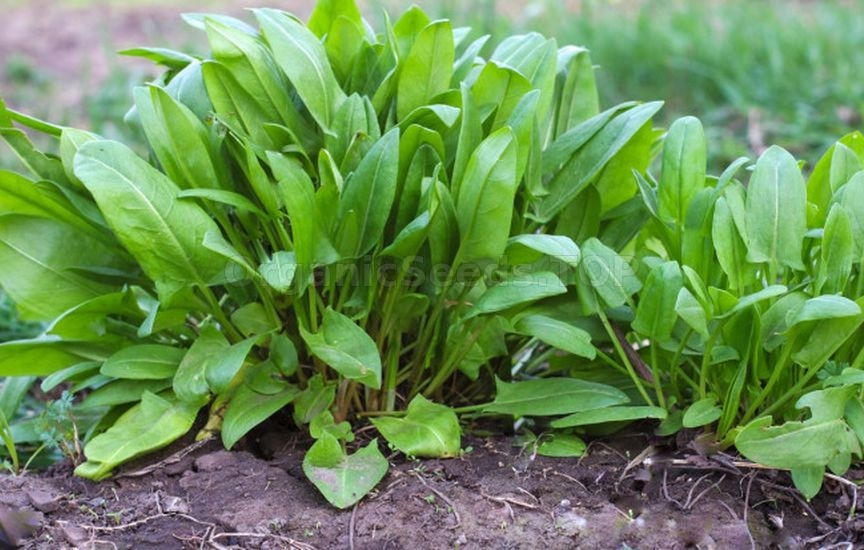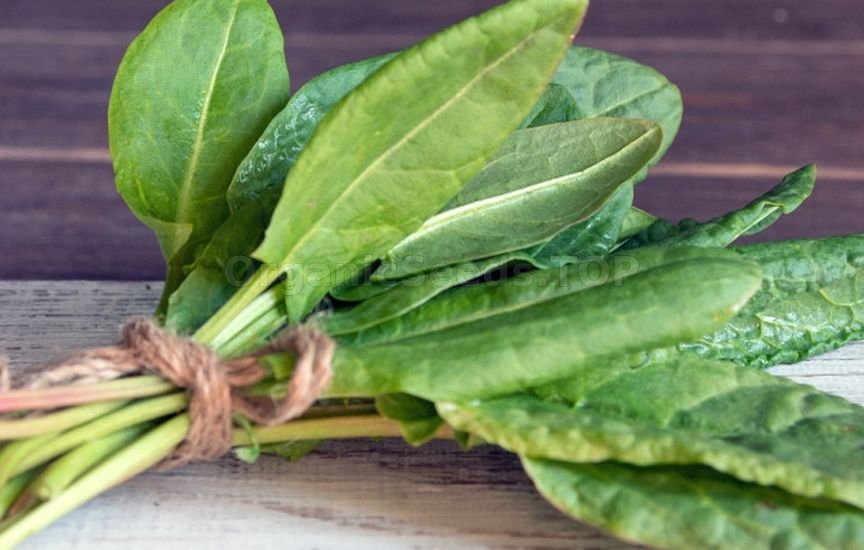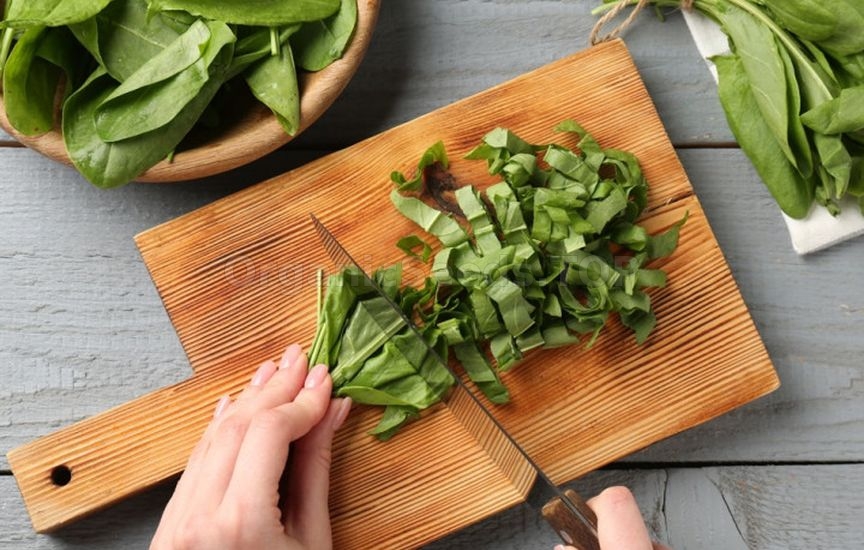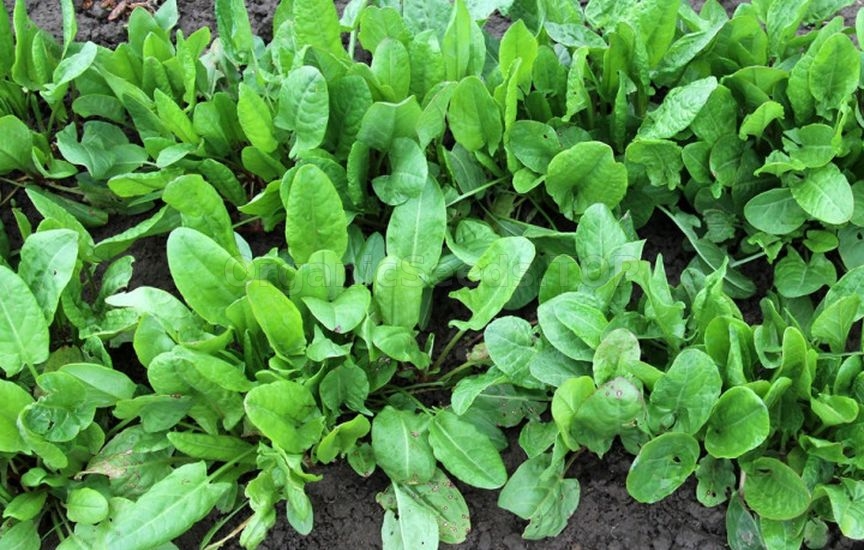Sorrel: what are its benefits and is it worth growing |
Sorrel is one of the earliest leafy vegetables. As early as the end of May, you can cut off young leaves and make soups and salads from them. But in order not to harm your health, you need to know some of the features of using sorrel.
 Sorrel is a genus of annual and perennial herbs of the Buckwheat family. There are over 150 species of this plant, which are distributed throughout the world. The leaves of many types of sorrel can be eaten raw or boiled. They contain many useful substances and even have medicinal properties. What is sorrel good for All types of sorrel are known for their sour taste, which intensifies during the period of seed formation. The leaves and stems of the plant contain a large number of useful substances: vitamins C, K, PP, beta-carotene, B vitamins, as well as magnesium, iron, calcium, potassium, phosphorus, zinc, selenium. In addition, sorrel contains organic acids (oxalic, citric, malic), amino acids, flavonoids, tannins, fiber, essential oils. And there are very few calories in this leafy vegetable: 21 kcal per 100 g of product. Sorrel improves metabolism, promotes the breakdown of fats, stimulates the gastrointestinal tract and gall bladder, has a mild laxative effect, helps get rid of swelling and remove excess fluid from the body, reduces the likelihood of blood clots, lowers blood glucose levels, slows down aging. Raw young leaves are useful for anemia, diabetes, when preparing for pregnancy, and cardiovascular diseases. In addition, sorrel is a good tonic, so nutritionists advise including it in the diet in the spring to eliminate vitamin deficiencies. Why sorrel should be consumed with caution Only young sorrel leaves are suitable for food. They are cut several times per season, before flowering. The amount of oxalic acid increases in older leaves, which can be harmful to health if consumed in excess. To neutralize the effect of oxalic acid, add sour cream, kefir or yogurt to dishes. Frequent consumption of dishes with sorrel can lead to increased acidity of the stomach, provoke the formation of kidney stones. Therefore, this leafy vegetable cannot be used in food for urolithiasis, inflammatory diseases of the kidneys, intestines, gout, rheumatoid arthritis, and salt metabolism disorders. Sorrel is also contraindicated in gastritis with high acidity, gastric ulcer and duodenal ulcer. Oxalic acid is also found in spinach leaves, rhubarb stems, beets, chard, wood sorrel, parsley, red and black currants and some other berries. If a urine test shows an increased content of oxalates, then the consumption of these products should be limited. But even in the absence of contraindications, it is not recommended to eat dishes with sorrel more than three times a week (for children - up to twice a week and only with sour cream or yogurt). To avoid unpleasant consequences, it is necessary to combine sorrel with products that can balance the pH of the stomach: boiled meat, fish, cereals. How to grow and prepare sorrel Sorrel is unpretentious, it can grow in partial shade, on soils unsuitable for growing other crops. Sorrel loves moisture, in hot weather without watering the leaves become coarse, accumulate more oxalic acid, premature flower stalks appear. The crop grows well and gives high yields on slightly acidic soils (pH 4.5-5), so there is no need to lime the soil before sowing seeds. From fertilizers, it is recommended to add compost or humus, ammoniated superphosphate (30-40 g per 1 sq.m) and potassium sulfate (20 g per 1 sq.m) or a complex fertilizer for vegetable crops of prolonged action. Sorrel can be sown in early spring, summer or before winter, on the eve of frost. The seeds are planted to a depth of 1-1.5 cm and mulched with a mixture of peat and compost. When sown in spring and summer, shoots appear after about two weeks. By the end of the season, the main root of each seedling grows, buds form in the leaf axils, from which new plants with their own root system then grow. Sorrel usually reaches its maximum productivity in the second year after sowing. Sorrel is grown in one place for no more than 4 years, and then sown in another bed. If this crop grows in one place for a long time, the leaves become smaller, and flower stalks appear earlier. It is better to cut off the flower stalks when they appear, since flowering stimulates increased formation of oxalic acid in the stems and leaves. During the season, 3-4 leaf cuttings are made at the root, the last one is usually done in August. Sorrel is used to make spring vitamin-rich green cabbage soup, salads, pie filling, the leaves are added to omelettes, vegetable casseroles, and are prepared for the winter: frozen, marinated, salted, fermented, dried. Wild sorrel and spinach are collected in early summer, far from roads and industrial enterprises. As you can see, growing sorrel is very easy. And if there are no contraindications for eating this leafy vegetable, then it is certainly worth including in the diet to improve health and diversify the menu. You may need:Sorrel seedsLeafy vegetable seedsOrganic fertilizers |
|
|
